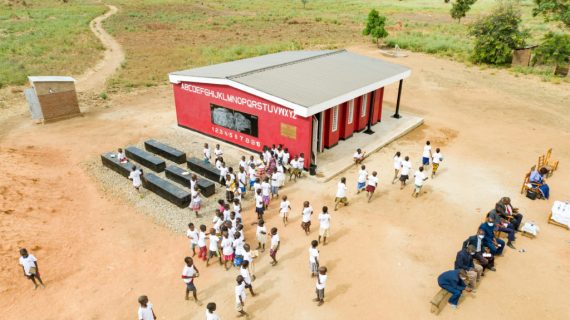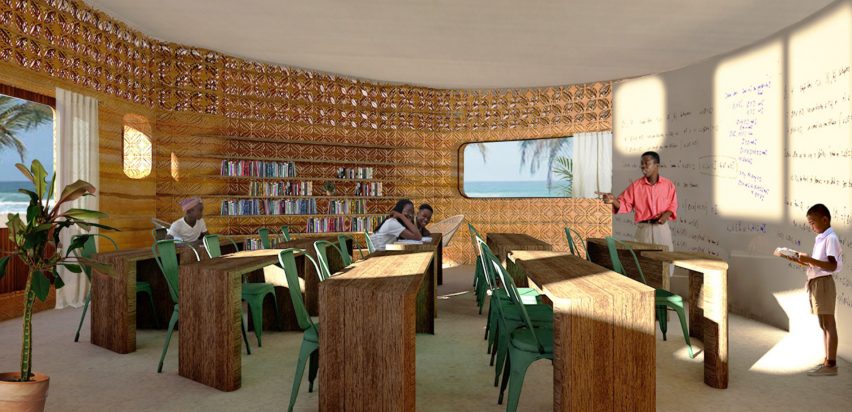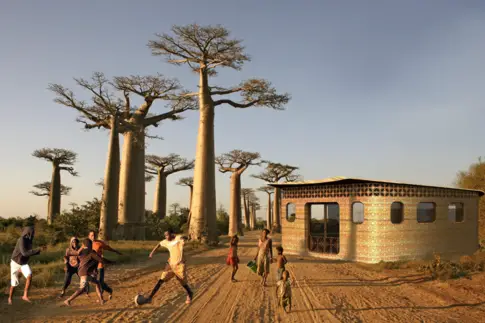The construction of Hut v1.0 (“Bougainvillea”), the first 3D printed school in Madagascar has been completed according to Thinking Huts, a charity devoted to increasing access to education through humanitarian-driven technological solutions.
The organization reportedly intends to generate jobs and assist the catalysis of economic growth in long-term cooperation with the institution Ecole de Management et d’Innovation Technologique (EMIT). The flower “Bougainvillea” represents Thinking Huts’ pledge to extend access to education, which has become stronger through time, and it was planted in collaboration with the community.
According to Maggie Grout, Founder and CEO of Thinking Huts, the last two years have highlighted the need for human-centric, inventive solutions to the world’s most serious challenges.
Project overview
Mehta of Defining Humanity produced the architectural design based on Grout’s honeycomb idea. SECOA was in charge of the local construction. Thinking Huts collaborated with 14 Trees, a business that has printed houses in Kenya and Malawi, to 3D print the pilot.

The 3D printed walls of the school are made of a cement combination that can endure environmental pressure. The roof, door, and windows are made of locally obtained materials — this hybrid design incorporates local manufacturers in the construction process while teaching 3D operational skills that may be used in future construction projects. Trusted local partners manage the school’s daily operations, arrange maintenance, and provide instructors.
Madagascar was selected as the first destination because of personal relationships on the ground, local support, and anticipated need for over 22,000 schools owing to the congestion and significant travel distances, and solar energy options. As Thinking Huts localizes the design based on community feedback and environmental factors, Hut v1.0 (“Bougainvillea”) will be copied in both urban and rural places where the need is greatest.
The next step is to build scalable honeycomb campuses with several linked Huts. Drawing inspiration from the beehive, it represents bringing people together to establish a community that can only grow if everyone works together to achieve a common goal. Construction waste and time may be reduced thanks to 3D printing.
Reported February 2021
Plans are afoot for the construction of Hut v1.0 (“Bougainvillea”), the first 3D printed school in Madagascar
Plans have been unveiled for the construction of Hut v1.0 (“Bougainvillea”), the first 3D printed school in Madagascar, particularly in the city of Fianarantsoa, a city (commune urbaine) in the south-central region and the capital of Haute Matsiatra Region of the East African country.
Dubbed “Hut v1.0”, the project has been presented by Thinking Huts, a non-profit organization founded by Maggie Grout that is creating innovative solutions to address education infrastructure issues of insufficient space to accommodate students in developing countries.
Also Read: 14Trees affordable housing and schools using 3D printing technology
The organization explains that insufficient investment in physical infrastructure is one of the largest barriers to education adding that 3D printing will bridge the opportunity gap while encouraging innovation and economic growth.
“We cannot promise an end-all solution to all of the problems surrounding education, but we are promising a start, “concluded the team.
An overview of the project design
The proposed school has been designed by Studio Mortazavi, an architectural design agency based in San Francisco, Lisbon, and Paris.
Featuring 3D printed walls, as per the design, each hut will have a secure door, operating windows, and internet access. Externally, the hybrid design features a vertical farm and solar panels, while the interior will accommodate desks, chairs, and tables. Importantly, multiple pod configurations allow for easy expansion in the future.

To construct each unit, an architectural scale printer will extrude the construction material, building the walls from the ground up, layer by layer. The Thinking Huts team says that 3D printing decreases construction time from months to days while reducing the project’s carbon footprint. “Our cement mixture is able to withstand environmental pressure and will emit less CO2 compared to traditional concrete.”
The finished school will be a hybrid of 3D printed walls and locally-sourced materials for the construction of roofs, doors, and windows.


Please contact the [email protected]
We are always happy to receive updates and corrections
Hi there! From team Thinking Huts. We wanted to request an update for the architectural design studio credit. We ended up switching out and working with Defining Humanity. The architects are Bruno Silva and Yash Mehta. We would be happy to supply updated photos. Please email [email protected]